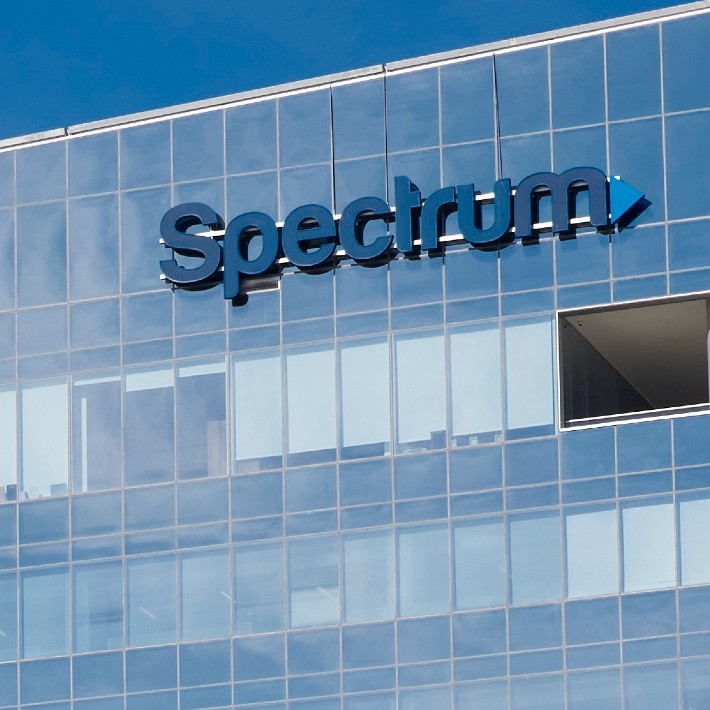
Cable company Charter Communications appears keen to add to its spectrum holdings – a noteworthy stance considering the company is in the early stages of building a small-scale mobile network that would reduce its dependence on its MVNO partner, Verizon.
"With access to 3.1GHz band spectrum, Charter would continue to extend the reach of our wireless network to give our customers faster speeds, more capacity, and broader coverage wherever they go," the company told the FCC in a recent filing.
Continued the company: "Charter is constantly investing and innovating to stay ahead of consumer demands and ensure that its products and services are cutting edge. For example, Charter invested $465 million to win 210 CBRS Priority Access Licenses (PALs) in the CBRS auction. By integrating multiple access technologies, such as Wi-Fi, CBRS, 5G, and other converged and virtualized network technologies into a 'hybrid mobile network,' Charter is increasing wireless competition and cost-effectively delivering robust high-capacity, high-compute, low-latency connectivity throughout our footprint."
Broadly, Charter argued the FCC should free up spectrum in the lower 3GHz band under the same kind of sharing scenario it pioneered in the nearby 3.5GHz CBRS band. However, that stance puts Charter squarely in opposition to Verizon, AT&T and other big wireless network operators represented by the CTIA lobbying association.
The rise of cable in mobile
Charter's new filing with the FCC detailed a meeting earlier this month between high-level executives at the company and a number of top FCC officials. It also clearly positions Charter as a supporter of shared spectrum. And, most importantly, the filing suggests that the company may be interested in purchasing more spectrum for its wireless networking ambitions.
Figure 1:  (Source: Charter Communications)
(Source: Charter Communications)
To be clear, Charter has made no secret of its interest in reducing its MVNO payments to Verizon. Charter's Spectrum Mobile smartphone service runs atop Verizon's 4G and 5G networks, but Charter has been working to offload its mobile traffic to other connections in order to reduce its payments to Verizon.
Charter initially pursued an offload strategy using Wi-Fi. The company has begun advertising its "Speed Boost" service for its Spectrum Mobile offering, which promises faster speeds to its mobile customers when they're using Charter's in-home home Wi-Fi connections.
Charter's mobile efforts have been wildly successful. The company already counts around 5 million mobile customers, and the financial analysts at Evercore predict the company will add 2.2 million more in 2023.
But the cable company is also pursuing a bigger offload strategy that involves building a 5G network on the $464 million worth of CBRS spectrum the company purchased in 2020. So far Charter hasn't launched commercial CBRS services, but it continues to tout its tests of the technology.
Charter hasn't participated in any recent FCC spectrum auctions following the agency's CBRS auction. But the company urged FCC officials to release additional spectrum between 3.1GHz and 3.45GHz using the same sharing model the agency implemented in the CBRS band.
"The innovative licensing model and shared framework of CBRS enabled both nationwide carriers and many new entrants – including not only Charter, but agricultural companies like John Deere, municipalities, local schools and factories – to develop their own networks tailored to specific needs, such as industrial automation, artificial intelligence, and predictive maintenance across environments ranging from warehouses and factories to airports and shipping ports to office buildings in rural and in densely-populated areas," Charter wrote. "The FCC, NTIA, and the DoD can replicate the benefits of CBRS by adopting a similar model for the 3.1GHz band."
Opponents of sharing
At issue in the lower 3GHz spectrum band is a battle among sharing proponents and companies that prefer exclusive-use spectrum licenses. The US Department of Defense (DoD) currently uses the band for radar and other applications.
Congress is currently debating how it might release spectrum in the lower 3GHz band for commercial uses. The US wireless industry – fronted by its main trade association, the CTIA – has loudly argued that the spectrum be released purely for licensed uses. Others, though, are pushing for a CBRS-style framework that could allow licensed, unlicensed and federal users to share the band. Charter now sits alongside the DoD and others in supporting that latter position.
William Webb, CTO of Access Partnership and former director at Ofcom, wrote in a recent FierceWireless column that US regulators will need to carefully address the lower 3GHz issue. "What is the right way ahead on 5G spectrum, and in ensuring that there is the optimal amount of spectrum for all users according to the value that they add from using it?" he wrote.
However, US regulators remain tied up in political knots. For example, President Biden's FCC nominee, Gigi Sohn, is now in her third year of seeking Senate approval.
Related posts:
— Mike Dano, Editorial Director, 5G & Mobile Strategies, Light Reading | @mikeddano
About the Author(s)
You May Also Like












